Novel transition metal-free synthetic protocols toward the construction of 2,3-dihydrobenzofurans: a recent update
- PMID: 39734577
- PMCID: PMC11672212
- DOI: 10.3389/fchem.2024.1470861
Novel transition metal-free synthetic protocols toward the construction of 2,3-dihydrobenzofurans: a recent update
Abstract
2,3-Dihydrobenzofurans are noteworthy scaffolds in organic and medicinal chemistry, constituting the structural framework of many of the varied medicinally active organic compounds. Moreover, a diverse variety of biologically potent natural products also contain this heterocyclic nucleus. Reflecting on the wide biological substantiality of dihydrobenzofurans, several innovative and facile synthetic developments are evolving to achieve these heterocycles. This review summarizes the transition-metal-free, efficient, and novel synthetic pathways toward constructing the dihydrobenzofuran nucleus established after 2020.
Keywords: catalyst free; dihydrobenzofurans; organocatalyzed; photocatalytic; transition metal-free.
Copyright © 2024 Mushtaq, Irfan, Haq, Mansha, Khan, Zahoor, Parveen, Irfan, Kotwica-Mojzych, Glowacka and Mojzych.
Conflict of interest statement
The authors declare that the research was conducted in the absence of any commercial or financial relationships that could be construed as a potential conflict of interest.
Figures


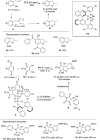
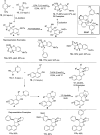

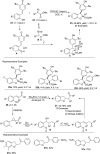


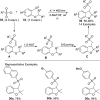



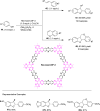










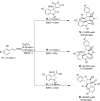

Similar articles
-
Synthesis of Medicinally Privileged Heterocycles through Dielectric Heating.Curr Med Chem. 2017;24(41):4596-4626. doi: 10.2174/0929867324666170223152137. Curr Med Chem. 2017. PMID: 28240166 Review.
-
Synthesis of 2-isoxazolyl-2,3-dihydrobenzofurans via palladium-catalyzed cascade cyclization of alkenyl ethers.Chem Commun (Camb). 2021 May 13;57(39):4799-4802. doi: 10.1039/d1cc00709b. Chem Commun (Camb). 2021. PMID: 33982707
-
Development of novel transition metal-catalyzed synthetic approaches for the synthesis of a dihydrobenzofuran nucleus: a review.RSC Adv. 2024 May 3;14(21):14539-14581. doi: 10.1039/d4ra01830c. eCollection 2024 May 2. RSC Adv. 2024. PMID: 38708111 Free PMC article. Review.
-
Dibenzo-Fused Heterocycles: A Decade Update on the Syntheses of Carbazole, Dibenzofuran, and Dibenzothiophene.Chem Rec. 2024 Oct;24(10):e202400078. doi: 10.1002/tcr.202400078. Epub 2024 Sep 6. Chem Rec. 2024. PMID: 39240002 Review.
-
Alkynoates as Versatile and Powerful Chemical Tools for the Rapid Assembly of Diverse Heterocycles under Transition-Metal Catalysis: Recent Developments and Challenges.Top Curr Chem (Cham). 2021 Jan 5;379(1):3. doi: 10.1007/s41061-020-00316-4. Top Curr Chem (Cham). 2021. PMID: 33398642 Review.
References
-
- Alexander H. (1892). Reduction des Cumarons. Ber. Dtsch. Chem. 25, 2409–2411. 10.1002/cber.18920250236 - DOI
Publication types
LinkOut - more resources
Full Text Sources

